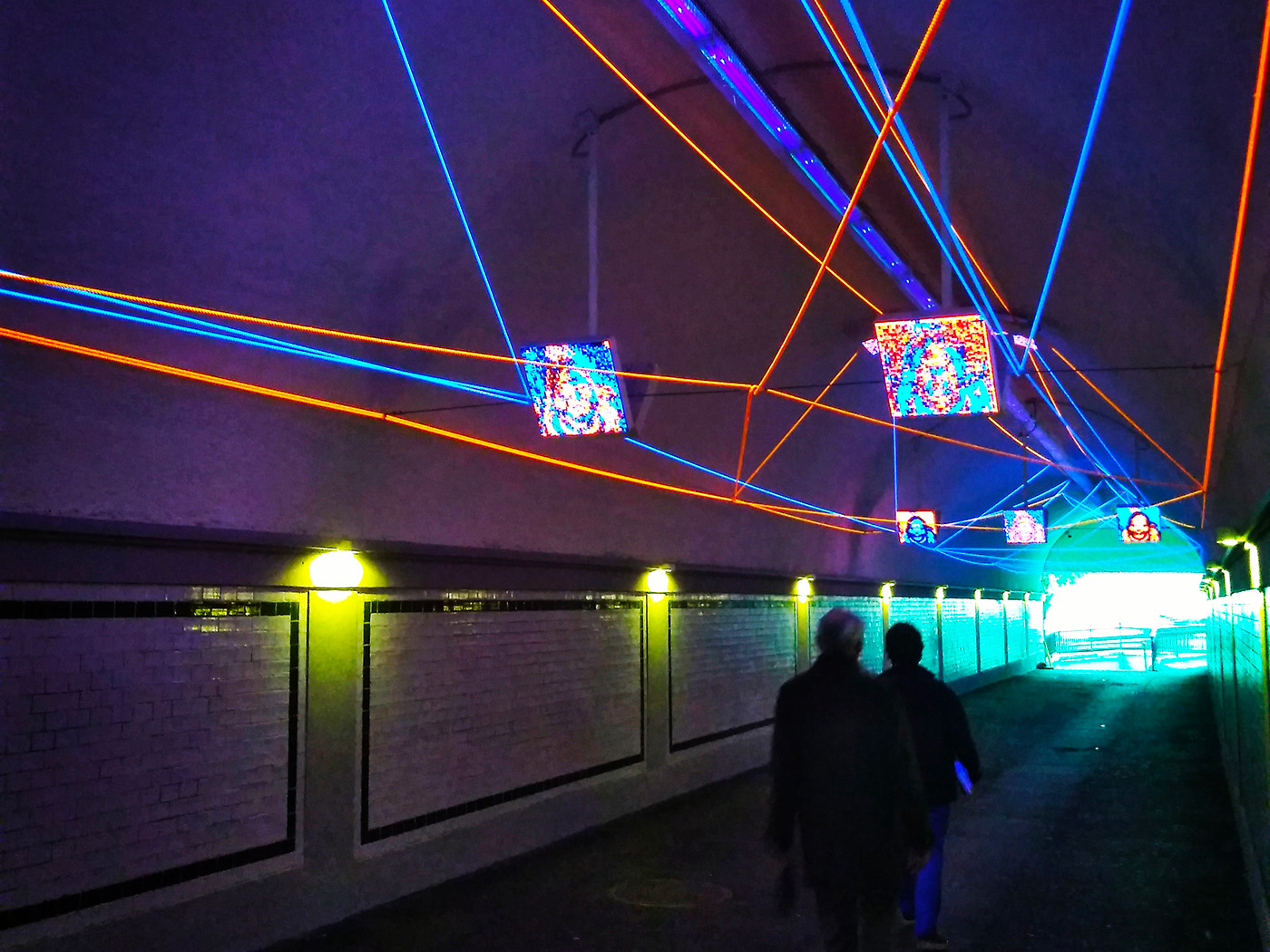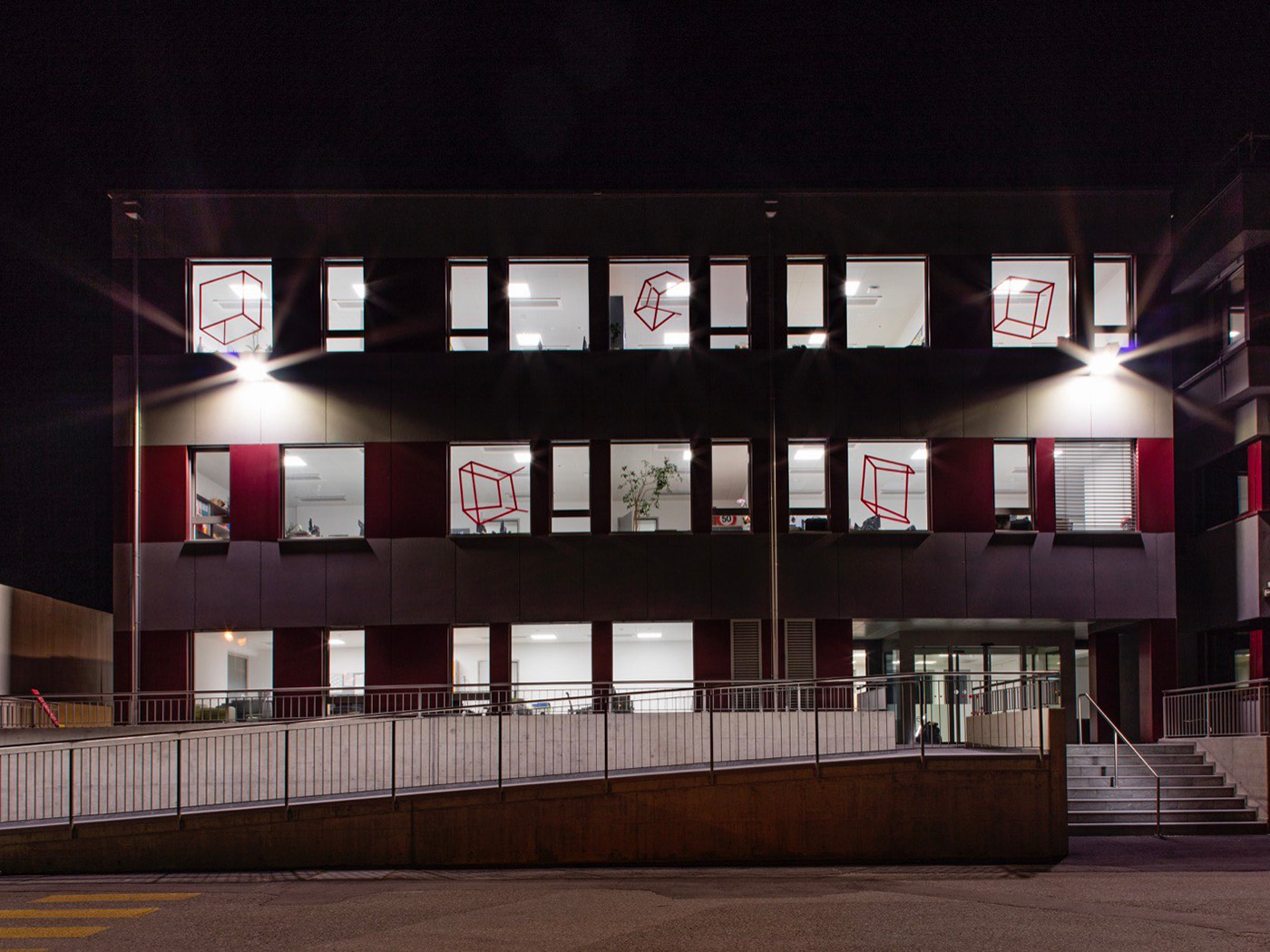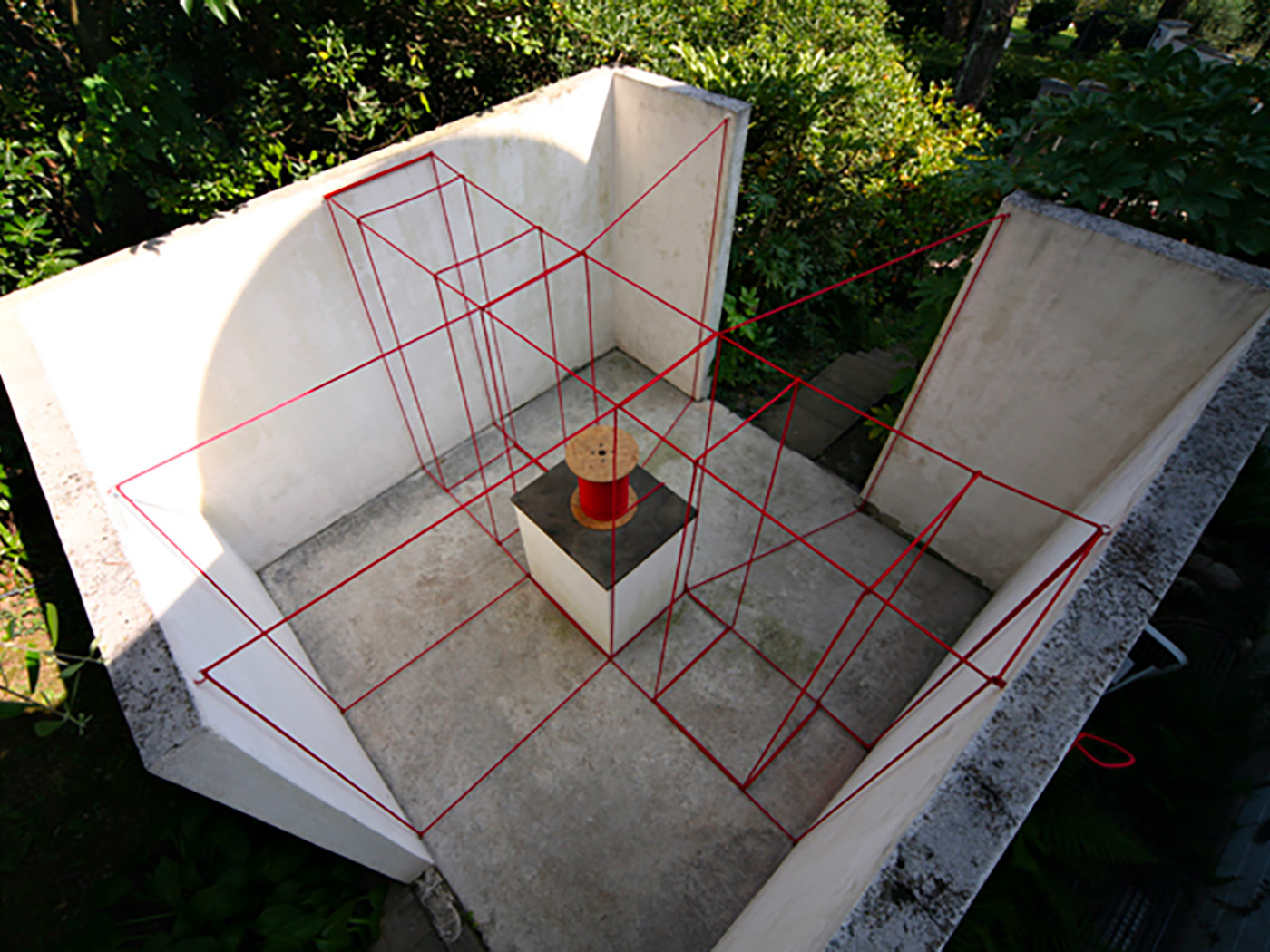13–14 marzo-settembre 2022
Linhas de produçao
Mostra personale
A cura di Jorge da Costa
Centor de Arte Contemporanea Graça Morais
Fotografie di Manuel Teles
Brgança – Portugal
>Guarda l'invito della mostra
>Visita il sito del Centro d’arte Contemporanea Graça Morais
>Guarda il video
Designed on the most diverse supports, whether a canvas or a tile, a building, a street or a landscape, the line, or the line segment, is the founding matrix of all the work of the Portuguese descendant Alex Dorici (Lugano, Switzerland, 1979).
Dorici has been dedicated to persistent research in the field of artistic creation, constantly introducing and exploring new possibilities and new materials, transforming his work into a surprising and multifaceted universe, ranging from traditional painting on canvas, to monumental site-specific installations.
The way of acting on architectural surfaces, which today dominates much of his work, originated in traditional forms such as engraving and painting, but above all in the incursions he made through the universe of Street Art.
The walls, such as the floor, the ceiling or the windows of a window, became for Dorici the primordial supports of his interventions, questioning not only the notion of architecture, but also the boundaries between painting, sculpture and installation.
In his abstraction, his interventions represent the different ways in which the artist interacts with space, evidencing not only the stripping of the materials from which they are made, but also his constructive processes, while summoning the interaction of the visitor.
The variation of supports is consistent with the use of a great diversity of trivial materials, for commercial or domestic use, but produced industrially. In addition to the recurring blue adhesive tape, Dorici's artistic practice has been anchored to the use of other materials produced in series, such as cardboard boxes, plastic packaging for water, tiles, photoluminescent naval ropes, net bags for fruit, plastic film or even tennis balls, which accentuates the dimension of ephemeral work.
Portfolio Opere
Alex Dorici
Via Arbostra 3
CH-6963 Pregassona-Lugano
Phone
+41 (0)76 679 81 00
E-mail
info@alexdorici.ch
Artelier
Spazio espositivo indipendente
di arte contemporanea
Via Bossi 12
CH–6900 Lugano
Phone
+41 (0)76 679 81 00
E-mail
info@alexdorici.ch
Link e social
© Alex Dorici 2026
- News
-
Installations
- Rope#912Light
- L.Produçao
- Rope#88Light
- NeuralRope#1
- Geometrie
- SDW #21032018
- Portugal#729
- Azulejo#844
- 9#Rooms
- Portugal#49
- Rope#300Light
- Rope#125Light
- Garden#01
- Garden#02
- 3D Light Cube
- SD #12062013
- Rope #207/452
- Km Zero
- SDF into CH
- Cube
- #4179
- GeometricARC
- SD #07072013
- It's About Time
- S. Implosion
- Reappropriation
- SLV
- ?
- #AIL
- GeometricWall
- WPU2019
- #IRS
- BagBox#1
- Painting
- Information
- Exhibitions
- Publications
- Press
- Awards
- Permanent works





